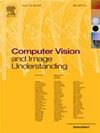网络压缩的最大冗余修剪
IF 3.5
3区 计算机科学
Q2 COMPUTER SCIENCE, ARTIFICIAL INTELLIGENCE
引用次数: 0
摘要
近年来,滤波剪枝已成为一种最有效的模型压缩方法。然而,现有的修剪方法通常依赖于预定义的分层修剪比率或计算代价昂贵的搜索过程,导致次优架构和高计算开销。为了解决这些限制,我们提出了一种新的剪枝方法,称为最大冗余剪枝(MRP),它由社区检测冗余度量(RMCD)和结构冗余剪枝(SRP)组成。本文首先通过实证研究证明了基于社会网络和卷积神经网络之间联系的角色信息假设。在此基础上,提出了RMCD来获得每层的冗余级别,实现自适应剪枝,而不需要预先定义分层比。此外,我们引入SRP,根据RMCD得到的各层冗余度,得到结构最优的子网。具体来说,我们在每次迭代时重新计算每层的冗余,然后在最冗余的层中删除最可替换的过滤器,直到达到目标压缩比。这种方法自动确定最佳的分层修剪比率,避免了统一修剪或昂贵的架构搜索的限制。我们表明,我们提出的MRP方法可以将ResNet-110的模型大小减少52.4%,在CIFAR-10上将FLOPs减少50.3%,同时在重新训练网络后实际上将原始精度提高1.04%。本文章由计算机程序翻译,如有差异,请以英文原文为准。
Maximum redundancy pruning for network compression
Filter pruning has become one of the most powerful methods for model compression in recent years. However, existing pruning methods often rely on predefined layer-wise pruning ratios or computationally expensive search processes, leading to suboptimal architectures and high computational overhead. To address these limitations, we propose a novel pruning method, termed Maximum Redundancy Pruning (MRP), which consists of Redundancy Measurement by Community Detection (RMCD) and Structural Redundancy Pruning (SRP). We first demonstrate a Role-Information (RI) hypothesis based on the link between social networks and convolutional neural networks through empirical study. Based on that, RMCD is proposed to obtain the level of redundancy for each layer, enabling adaptive pruning without predefined layer-wise ratios. In addition, we introduce SRP to obtain a sub-network with the optimal architecture according to the redundancy of each layer obtained by RMCD. Specifically, we recalculate the redundancy of each layer at each iteration and then remove the most replaceable filters in the most redundant layer until a target compression ratio is achieved. This approach automatically determines the optimal layer-wise pruning ratios, avoiding the limitations of uniform pruning or expensive architecture search. We show that our proposed MRP method can reduce the model size for ResNet-110 by up to 52.4% and FLOPs by up to 50.3% on CIFAR-10 while actually improving the original accuracy by 1.04% after retraining the networks.
求助全文
通过发布文献求助,成功后即可免费获取论文全文。
去求助
来源期刊

Computer Vision and Image Understanding
工程技术-工程:电子与电气
CiteScore
7.80
自引率
4.40%
发文量
112
审稿时长
79 days
期刊介绍:
The central focus of this journal is the computer analysis of pictorial information. Computer Vision and Image Understanding publishes papers covering all aspects of image analysis from the low-level, iconic processes of early vision to the high-level, symbolic processes of recognition and interpretation. A wide range of topics in the image understanding area is covered, including papers offering insights that differ from predominant views.
Research Areas Include:
• Theory
• Early vision
• Data structures and representations
• Shape
• Range
• Motion
• Matching and recognition
• Architecture and languages
• Vision systems
 求助内容:
求助内容: 应助结果提醒方式:
应助结果提醒方式:


